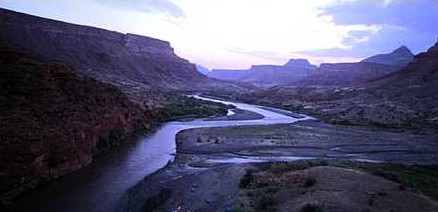
In
Äthiopien hat der Bau eines Staudammes begonnen,
der mit 224 Millionen US-$ das grösste
Kooperationsprojekt Chinas in Afrika darstellt.
Den Vertrag hat - u.a. gegen Konkurrenz aus
Deutschland - jenes chinesische Unternehmen
gewonnen, das in der Volksrepublik China für die
Errichtung des umstrittenen Damm-Projektes am
Jangtsekiang-Fluss verantwortlich ist. Der
Staudamm im nördlichen Äthiopien wird in
Afrikas tiefster Schlucht am Tekeze-Fluss mit 185
m das chinesische Vorbild um 10 Meter überragen.
Der Damm soll neben Bewässerung für
Kaffee-Plantagen Wasserkraft für 300 Megawatt
Strom liefern und in fünf Jahren fertig sein.
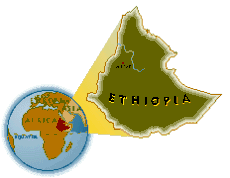 WASSERKONFLIKT
IM NIL-BECKEN WASSERKONFLIKT
IM NIL-BECKEN
Das Nilbecken ist die Heimat von etwa 250
Millionen Menschen. Das Einzugsgebiet des
längsten Flusses der Welt erstreckt sich über
zehn Länder (Ägypten, Sudan, Äthiopien,
Demokratische Republik Kongo, Burundi, Ruanda,
Uganda, Kenia, Tansania und Eritrea). Viele
dieser Länder haben ein Wüsten- oder
Halbwüstenklima, was die grosse Abhängigkeit
vom Nil als Wasserquelle erklärt. Staudämme,
die diese natürlichen Schwankungen ausgleichen
sollen, können jedoch als politisches Instrument
missbraucht werden, um flussabwärtsliegenden
Ländern den "Hahn" zuzudrehen. Bereits
der ehemalige ägyptische Präsident Sadat sagte
im Hinblick auf äthiopische Staudammprojekte:
"Wer mit dem Nilwasser spielt, erklärt uns
den Krieg!"
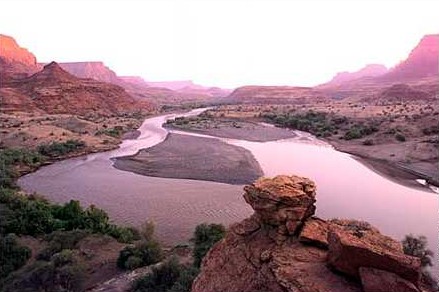
The
dam that wasn't built:
THE FIRST TEKEZE DAM PROJECT
In
1995 and 1996, a US-based engineering firm
(Harza) conducted feasibility studies on a
proposed dam on the Tekeze river. The studies
were fairly advanced and included preliminary
dam, powerhouse, and irrigation canal designs.
The curious thing about this project is that the
Tekeze river is described as the "largest
river in Eritrea." In fact, Eritrea has no
rivers that flow year round. The Tekeze river is
one of the major rivers of Ethiopia, and drains
the massive Simein mountains in Gonder, as well
as most of Tigray and Wello.
| |
|
netzwerk-afrika-deutschland
Chronologische Notizen |
| |
|
WASSERNOT
IN ÄTHIOPIEN |
| |
|
|
| 02.07.2002 |
|
270.000 nomadische
Afar im Nordosten von Äthiopien sind
nach zwei Jahren Dürre von Hungersnot
bedroht. Die Regierung hat Lebensmittel
in die Region entsandt |
| |
|
|
| 04.08.2002 |
|
Wegen des Ausfalls
der letzten Regenzeit werden nach
Schätzungen des Welternährungsprogramms
am Ende des Jahres vier Millionen
Menschen auf Nahrungsmittelhilfe
angewiesen sein. |
Grosse Staudämme - viel
geschmäht, aber nötig

Kaum ein Typ von Entwicklungsprojekten zieht so
viel Kritik auf sich wie grosse Staudämme. Ein
Verzicht auf derartige Projekte würde jedoch
erhebliche Einbussen bei der
Elektrizitätserzeugung, der
Bewässerungslandwirtschaft und beim
Hochwasserschutz mit sich bringen. Wegen der
wachsenden Weltbevölkerung sind sie
unerlässlich.

The
Yangtze River in China is the World's third
longest river. In 1997, that country began work
on what will eventually be the world's largest
dam and largest concrete structure, when it is
finished in 2009: The Three
Gorges Dam, in Hubei
province

FROM RBO's ARCHIVE
Another example of early Chinese-African
co-operation
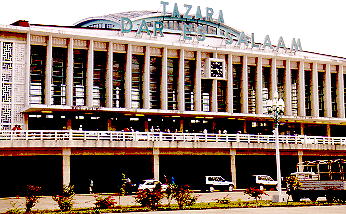
|
|
The construction of a $224m
hydroelectric dam in Ethiopia has begun, marking
the start of China's largest joint-venture in
Africa.
One of the major Chinese undertakers of the
world's largest hydro-power project - at the
Three Gorges on China's Yangtze River - has won
the bidding to contract the largest hydro-power
project in Africa.
The contract will be the largest cooperative
project between China and an African country.


The dam, which at 185 metres is 10 metres higher
than China's controversial Three Gorges Dam, and
installation of a 300 megawatt power plant is
expected to take five years to complete.
Across the northern highlands of Ethiopia, the
Tekeze River cuts a savage gorge 7,000 feet deep
- the deepest canyon in Africa. The headwaters of
the Tekeze, near Lalibela, form a maze of slot
canyons.
Through the 250-mile-long canyon that lies
downstream, the river pounds and plunges, foaming
with rapids, contorted by sharp bends. Surrounded
by desert buttes and pinnacles, seamed with
tributary ravines, the upper Tekeze looks
something like the Grand Canyon, though its gorge
is even deeper than the one carved by the
Colorado River.

Ethiopia's Tekeze Gorge
The
First Descent
When Richard Bangs and
several of his river-running cohorts explored a
half dozen rivers in Ethiopia in 1973, little did
they know that they would return nearly 25 years
later to notch a first descent down the country's
crown jewel, the Tekeze Gorge...
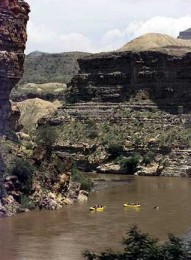
'No Water No
Future'
THE
WATERDOME
of Johannesburg
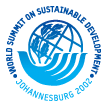 "More then 1
billion people are without safe drinking water
and twice that number lack adequate sanitation.
More then three million people die every year
from diseases caused by unsafe water. The Africa
Water Taskforce has decided to put water high on
the agenda of the World Summit. For this reason
the WaterDome will be organised parallel to the
summit. The WaterDome will be the place where
'water' really becomes everybody's
business".
Johannesburg will be a unique opportunity for the
water sector to show the world that water is at
the crossroads of development and environment.
Poverty reduction very often starts with water
issues. Poverty and water are inextricably linked
in many parts of the world. The details of this
link may vary greatly, but the impact upon the
lives, livelihoods and prospects of the poor are
undeniable. Pro-poor action programmes in water
service provision and resource management must be
a central element of any programme to tackle
poverty and promote sustainable development.
"No Water, No Future".
|